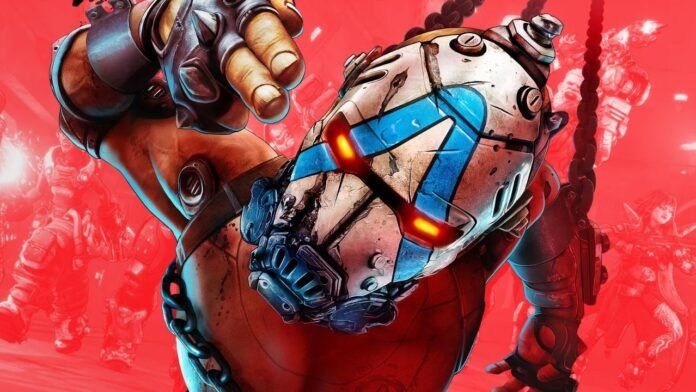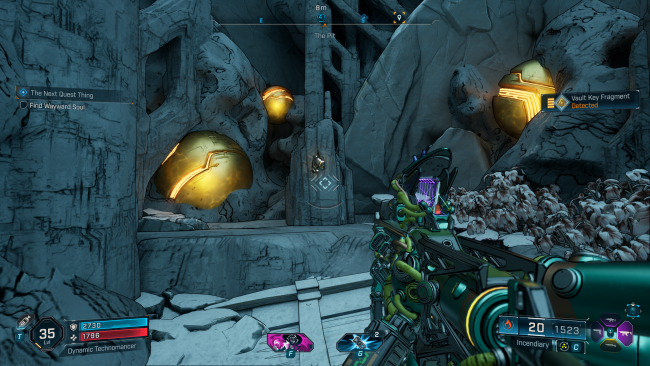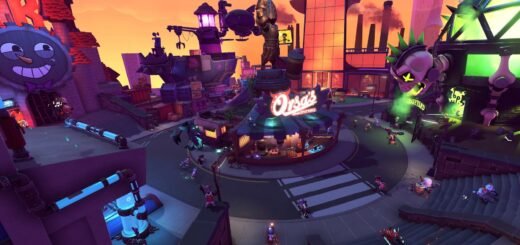Borderlands 4 wins over fans, but stumbles in performance.
On September 12, 2025, Gearbox brought the highly anticipated Borderlands 4 , arriving on PC, PlayStation 5, Xbox Series, and later, the Switch 2. Expectations were enormous, as the franchise already boasts a legion of fans who have followed its evolution since the first titles. The launch began with impressive numbers: on Steam alone, more than 200,000 people were connected simultaneously in the first few hours.
These numbers reinforce how relevant the series remains, but they don't tell the whole story. While some of the specialized press praised aspects like gunplay and pacing, those who played on PC encountered obstacles that took away some of the shine from this debut.
Initial excitement and the drop in ratings.

The initial impact of Borderlands 4 was positive. Many people were eagerly awaiting the chance to immerse themselves in new scenarios, even more varied weapons, and eccentric characters, hallmarks already known from the franchise. However, within the first few hours, reports began to emerge that cast doubt on the enthusiasm: inconsistent performance, constant crashes, and difficulty running the game even on computers considered powerful.
This contrast between expectation and reality was quickly reflected in Steam reviews. The game was initially rated "Mostly Negative," later rising to "Mixed," but without surpassing the 50% approval mark.
Technical problems marred the launch.
Among the main reports about Borderlands 4, some points are frequently repeated. The most notable is the inconsistent performance. Even state-of-the-art graphics cards struggle to maintain a stable 60 frames per second in complex scenarios.
Next, another frequently cited problem is stuttering, those small freezes that, although short, disrupt the fluidity of the game. Added to this are sudden freezes right at startup and, in some cases, the game doesn't even open. This feeling of instability led many to believe that the product wasn't ready for the PC market.
The use of technologies like DLSS has proven almost indispensable, even on machines with advanced configurations. For those unfamiliar with graphics settings, this necessity can lead to frustration.
Gearbox's response
Gearbox, the developer of Borderlands 4, was quick to respond. Randy Pitchford, CEO of the studio, acknowledged the problems and stated that PCs below the minimum specifications will hardly achieve satisfactory performance. He also highlighted that the launch patch brought some fixes, but did not resolve everything.
A 2.7 GB update package arrived on day one, attempting to address crashes and improve stability. However, many criticisms remained. The company published optimization guides explaining which graphics settings should be prioritized, but some in the community considered this a temporary fix.
High expectations and impact on the public.

Therefore, what weighed most heavily on Borderlands 4 was the discrepancy between the promises and the reality. In times of AAA releases, every detail is closely observed, and technical problems end up having a greater impact than the successes. The feeling is that the game's ambition exceeded its ability to deliver fluidity on mid-range hardware.
This scenario has created a ripple effect: negative comments spread quickly, affecting the decision of those who haven't yet purchased. Many prefer to wait for new patches before investing, and this could compromise sales in the medium term.
Next, another important point discussed by the community is the adoption of Unreal Engine 5. Technologies like Nanite and Lumen offer impressive visual results, but they also demand a lot from the hardware. In Borderlands 4, this choice showed its impact: while it brought richer, more detailed worlds, it raised the performance barriers for a large portion of PC users.
The release of Borderlands 4 teaches a clear lesson: the hype surrounding big titles creates enormous pressure, and any flaw receives disproportionate attention. Still, this doesn't erase the fact that there's a robust game, with its own identity, waiting to be enjoyed once the necessary adjustments are made.













